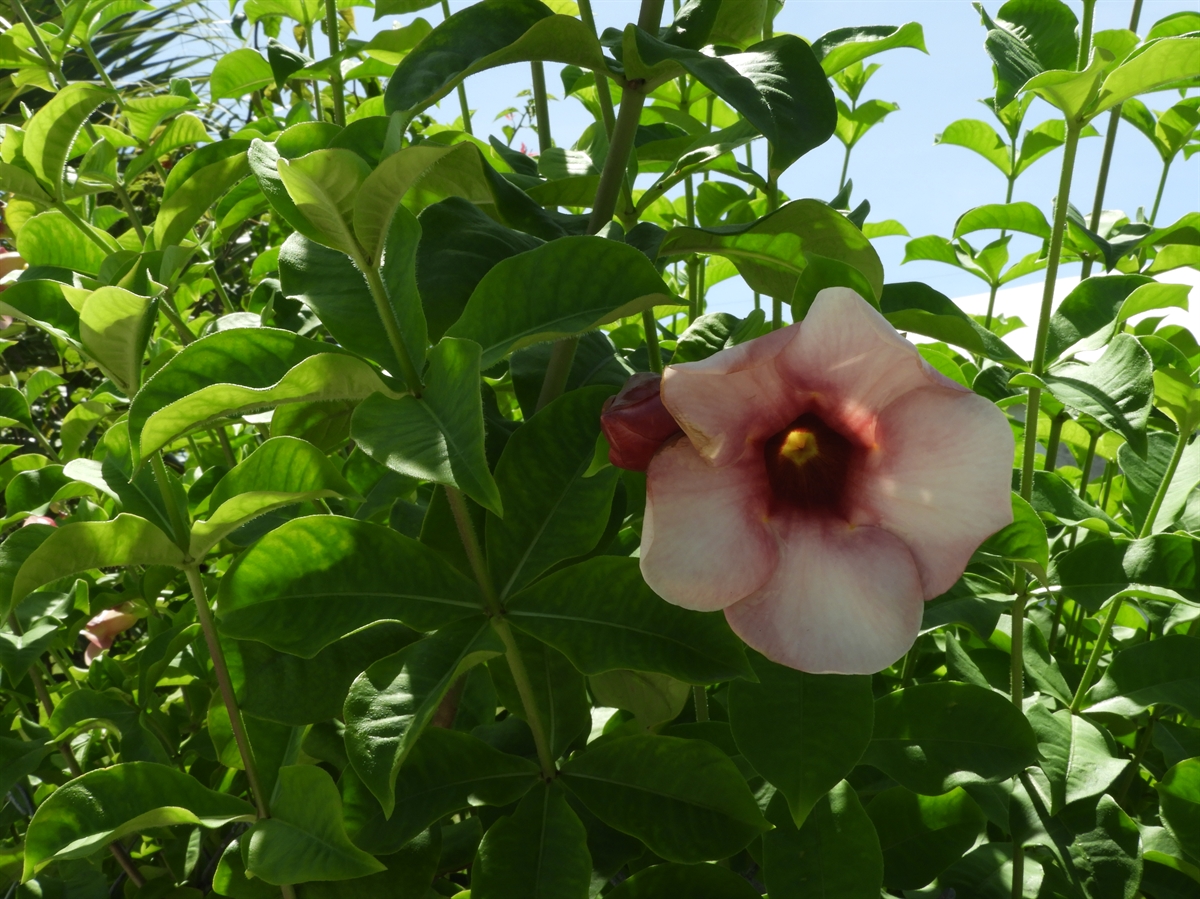Habit: Allamanda blanchetii grows as a pubescent climbing shrub to 3 m in height. The leaves are arranged in whorls, to 15 cm long, 5 cm wide, with an entire leaf margin, and an acute leaf apex. The abaxial surface is pubescent.
The complete, perfect, actinomorphic flowers are arranged terminally and in leaf axils in cymes or solitary. The calyx has 5 unfused, green, pubescent sepals. The corolla has 5 red/purple/pink petals that are fused forming a pubescent tube with the lobes slightly overlapping to one side forming a pinwheel shape. There are 5 stamens fused to the corolla tube. The ovary is superior and has 2 locules and many ovules. There are 2 glands with the stamens. The fruit is a follicle (in pairs) that turns brown at maturity.
Habitat: Allamanda blanchetii grows in Human Altered environments (yards and roadsides).
Distribution: Allamanda blanchetii is NOT native to the Lucayan Archipelago. It is native to eastern Brazil. It is grown throughout tropical and subtropical regions of the world.
Medicinal/Cultural/Economic usage: Allamanda blanchetii is not known to have been used medicinally in the Lucayan Archipelago.
It is used as an ornamental for its large, showy flowers.
